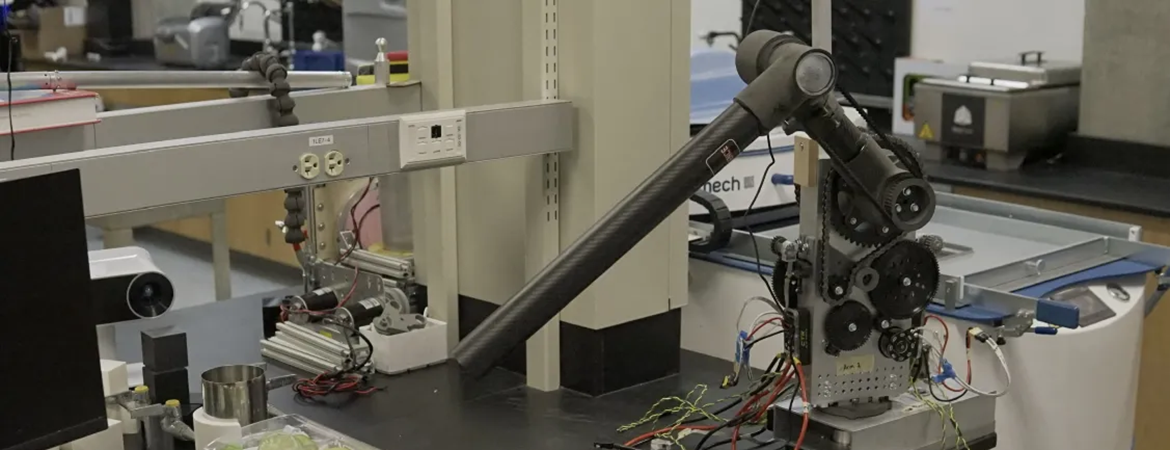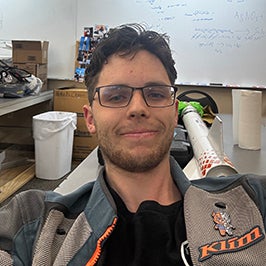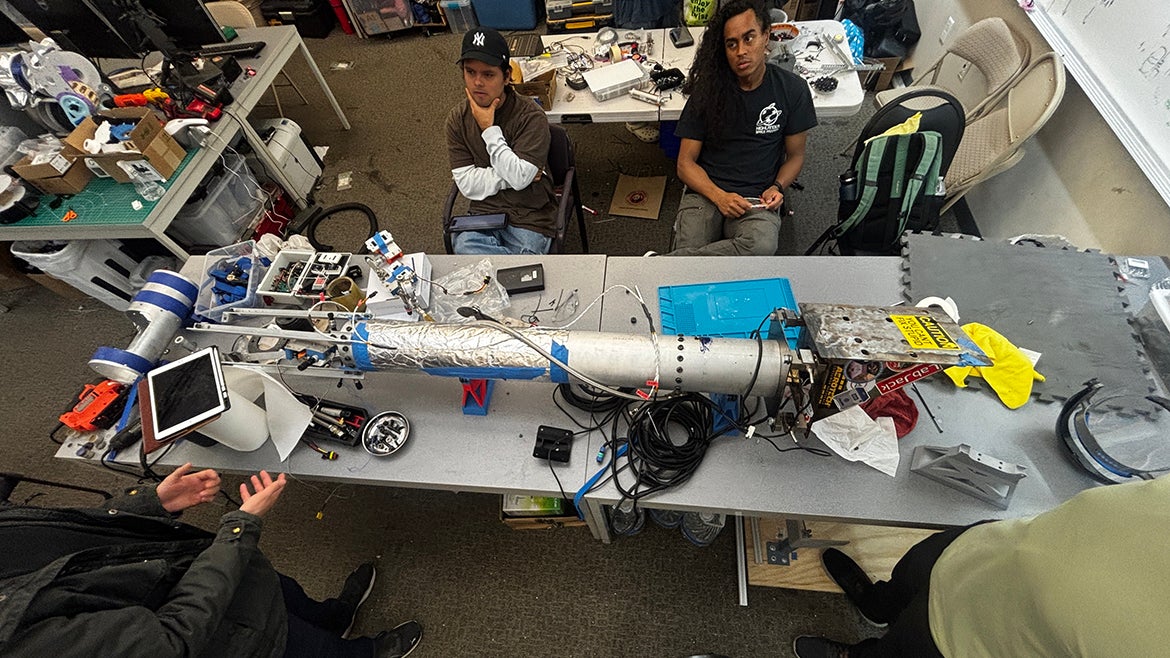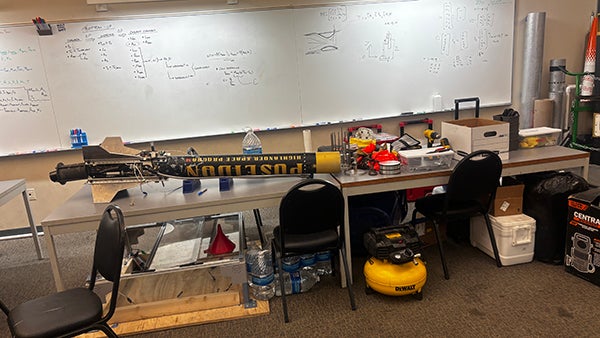
Folding laundry, cooking, and driving are just some of the things Brandon Marcus wished he didn’t have to do.
But what if a robot could do them?
“My interest in robotics stems from liking the idea of a theoretical world where I don’t have to do the mundane tasks,” said Marcus, a robotics graduate at the Marlan and Rosemary Bourns College of Engineering (BCOE). “There are many repetitive tasks that take up many hours of my life, and the prospect of having to do less or none of that sounds quite nice.”
Marcus’s engineering interests have propelled him to success as a student researcher in robotics and artificial intelligence. He is the co-author of a major research publication that was recently accepted for inclusion in a prestigious robotics and automation flagship conference, and he has been praised by faculty for his accomplishments. Marcus will be the second BCOE student to graduate with a bachelor’s degree in robotics.
Marcus credits some of his successes to his experiences as a firmware engineer for the Highlander Space Program (HSP), a student organization focused on designing, building, and testing liquid rockets, and working in the Center for Robotics and Intelligent Systems (CRIS). CRIS is an interdepartmental research center that conducts cutting-edge research on the foundations and applications of intelligent and autonomous systems, including robotics, computer vision, machine learning, and real-time systems.
“CRIS taught me what it was like to work on an extremely hard problem under an extremely talented PhD student, Cody Simons,” Marcus said. “He was able to show me the ropes and teach me things. I experienced the struggle of making a mistake and then reiterating it until it was right. HSP, on the other hand, taught me what it was like to lead a larger team, as well as working on a real project with a specific end goal: launching a rocket.”
Marcus’ co-authored paper, “Language-guided Robust Navigation for Mobile Robots in Dynamically-changing Environments,” was recently accepted for inclusion at the Conference on Automation Science and Engineering, the flagship conference on automation by the Institute of Electrical and Electronics Engineers Robotics and Automation Society. The paper’s other authors include Amit Roy-Chowdhury, a professor in the Department of Electrical and Computer Engineering and co-director of the UC Riverside Artificial Intelligence Research and Education (RAISE) Institute.
The paper focuses on developing a robot that, using a predetermined map, can use language to plan a new route when its initial route encounters an obstacle or an unforeseen change in its environment, such as a closed door or a human walking by.
“This is particularly helpful in situations in large areas, where robots may not know the best route, but a human does, as well as in areas that might be restricted and cannot be recorded by a robot and its onboard camera,” Marcus said. “A human can guide them using words to steer them around the obstacle.”
There has been a surge in the use of autonomous mobile robots across many industries and fields. This includes using such technology to collect leaf samples in agriculture, applying wall plaster in construction, inspecting decommissioned nuclear plants, and collecting shopping carts at grocery stores and shops.
Marcus has also been working in Roy-Chowdhury’s Vision and Learning group for two years. The group conducts research on the foundations and applications of computer vision, image processing, and machine learning. Computer vision is a field of AI that focuses on computers “seeing” and interpreting images in a way similar to human vision.
Roy-Chowdhury cited Marcus’s many accomplishments.
“Brandon has worked with multiple graduate students, helping with the research, coding, and physical experiments with robots,” he said. “This has been critical to the publications, and Brandon is a co-author on a major research publication that shows how to leverage the power of recently developed large language models and large vision-language models for robot navigation. This is a critically important topic as we make efforts to integrate AI models with the physical world.”
Marcus, who walked during BCOE Commencement last month, is looking forward to the next chapter in his engineering journey.
“I am currently looking to work in industry, and I may go back into research for a master’s degree or PhD,” he said. “But I think, for right now, I am interested in working on a new project and developing new products.”
Header image: A Senior Design robot arm project inside the BCOE Mechanical Engineering Design and Development Lab that Brandon Marcus helped build. (All photos courtesy of Brandon Marcus)


